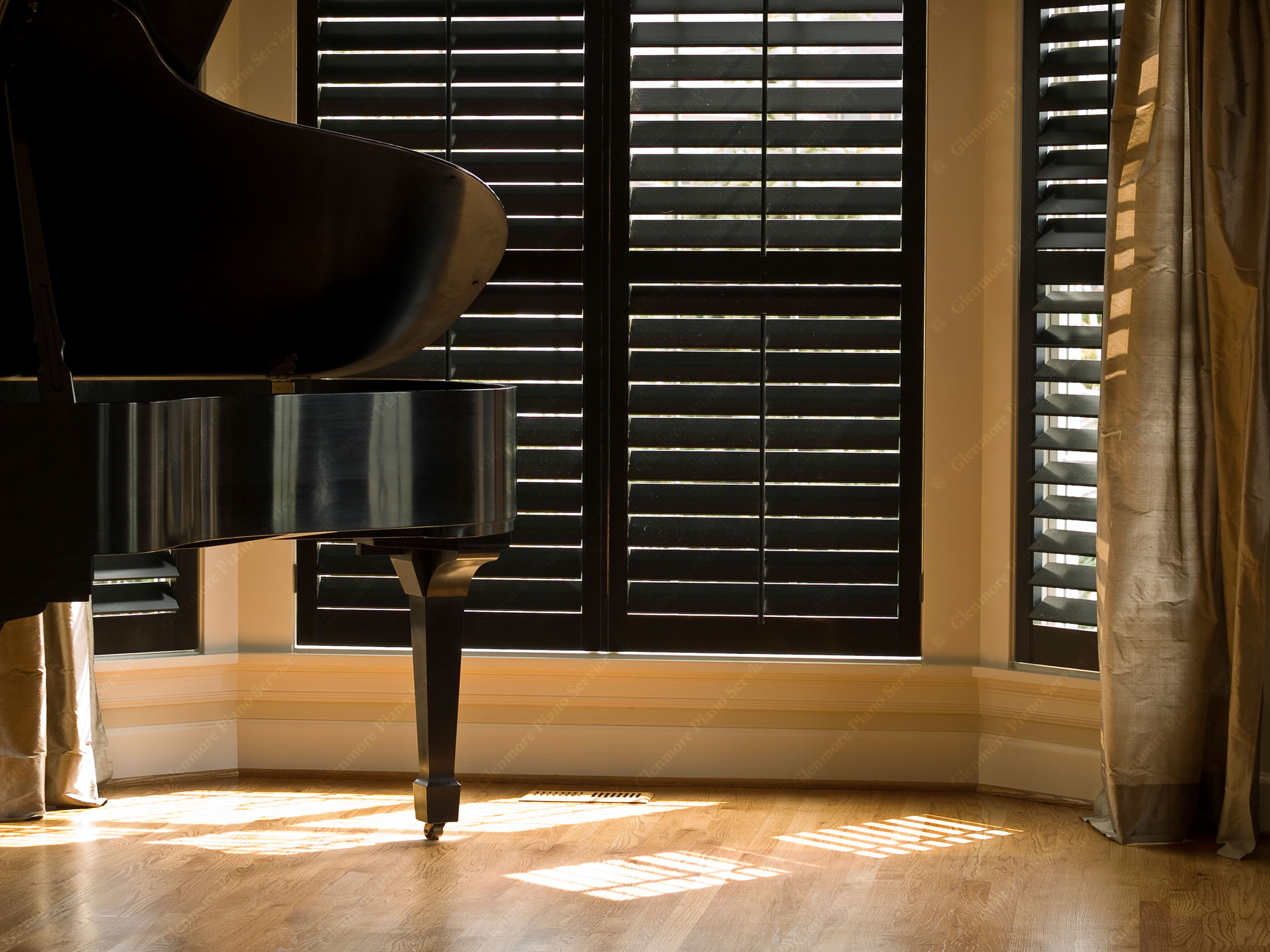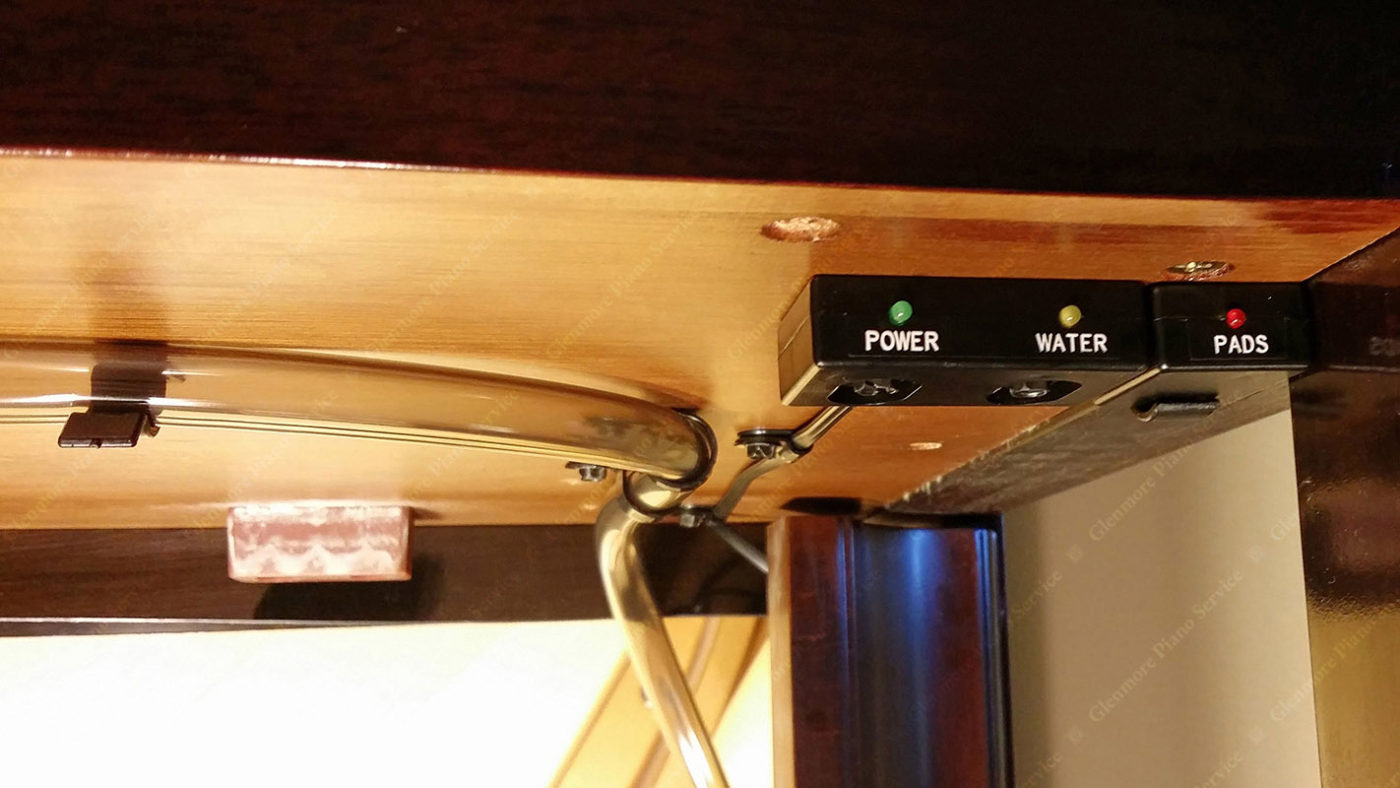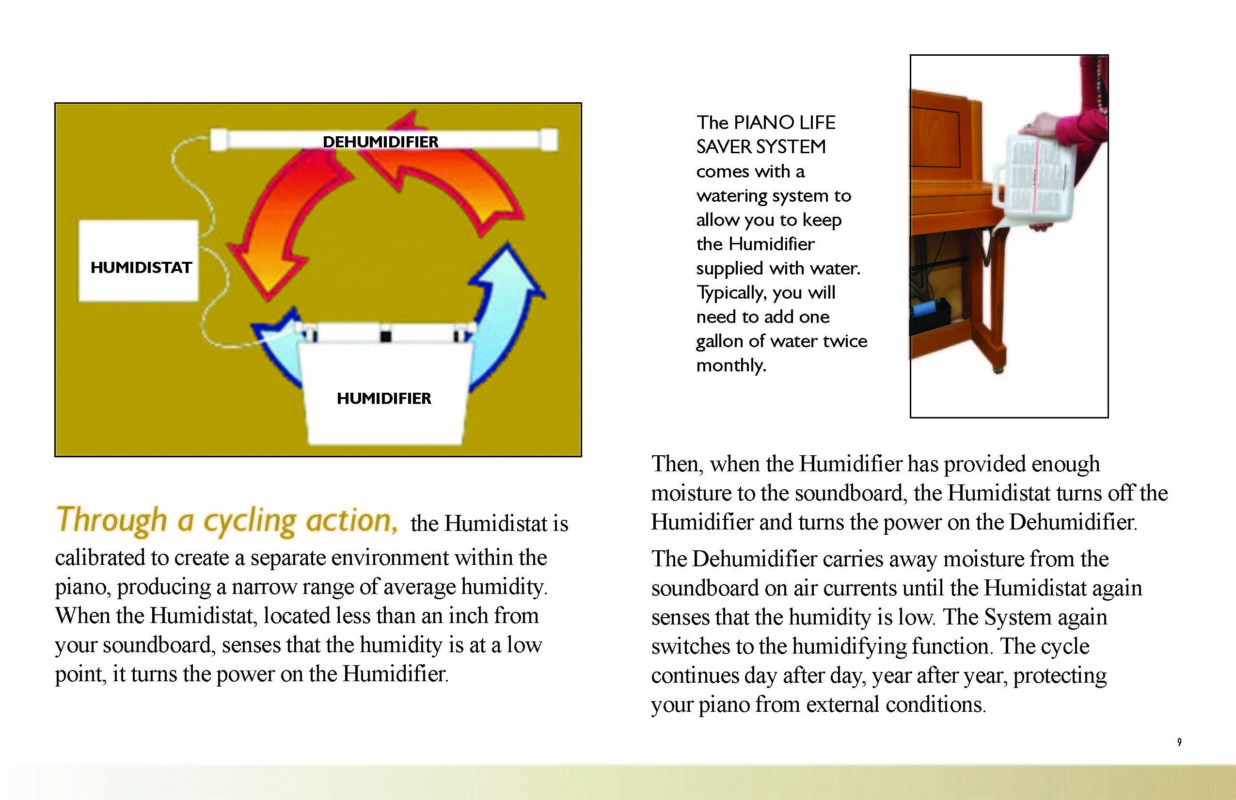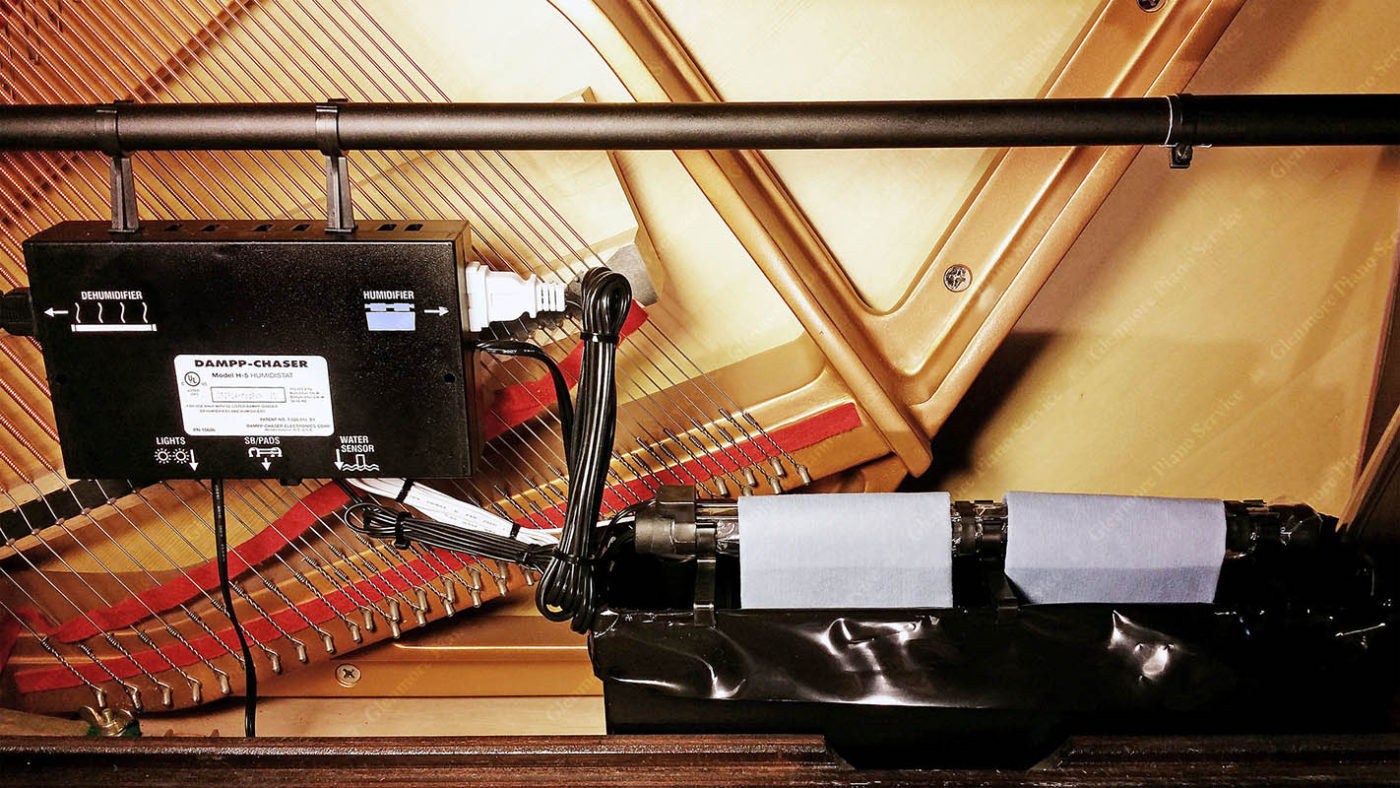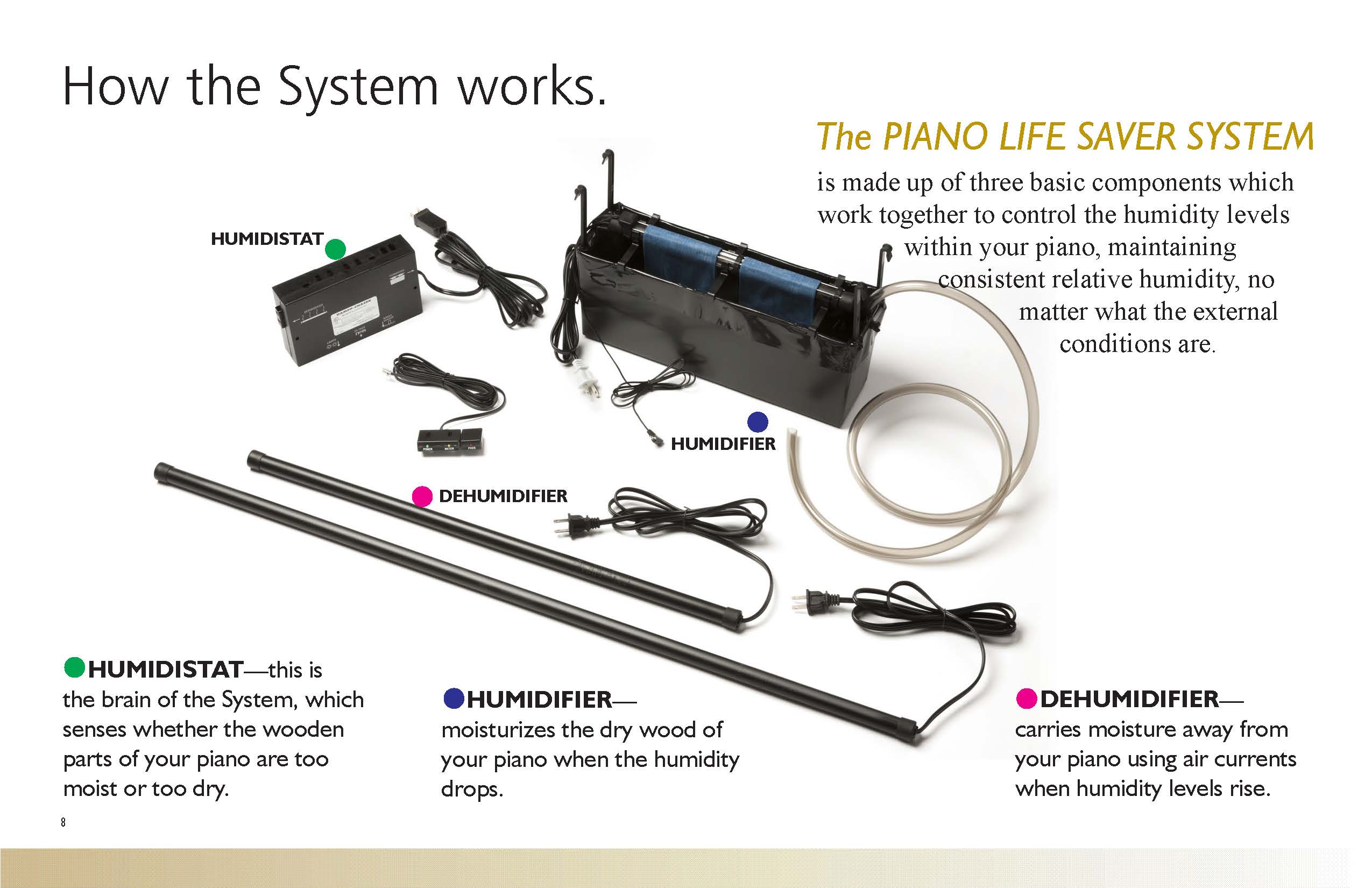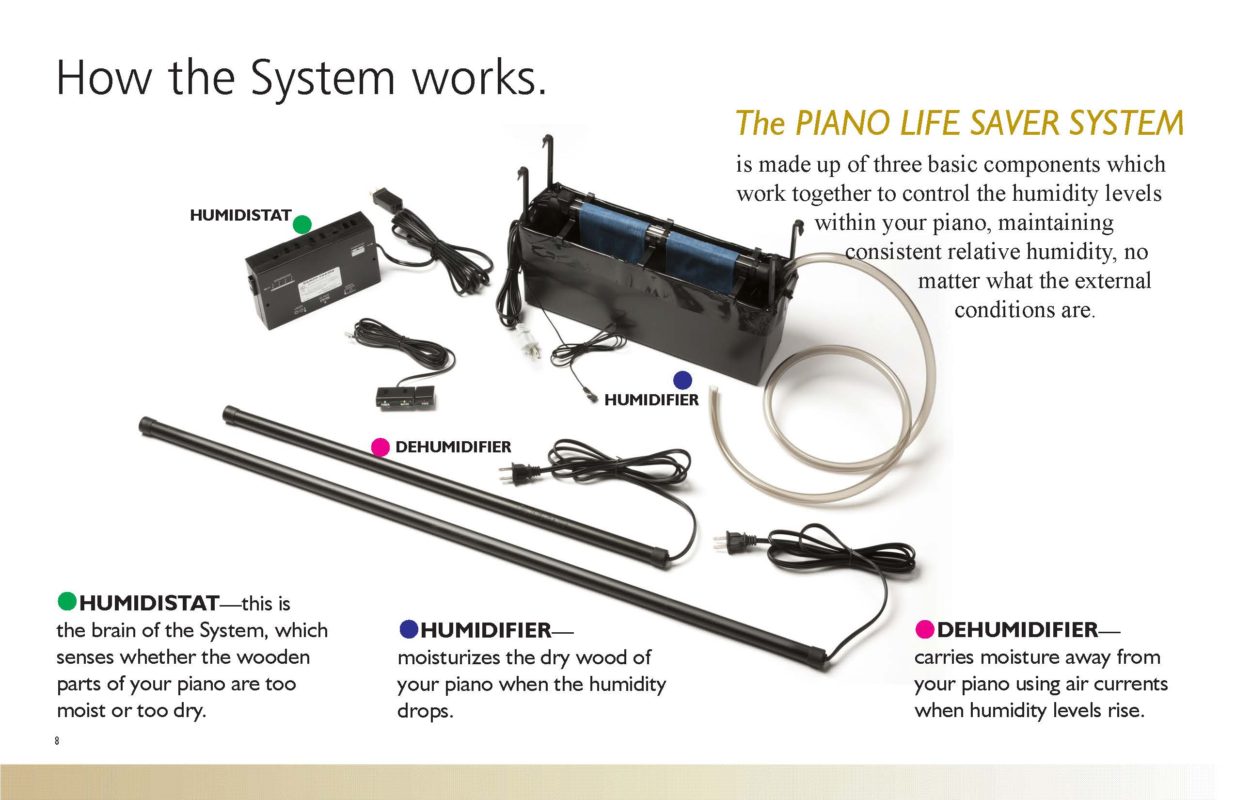Why Do I Need A Piano Life Saver System?
Many of the world’s most respected piano makers build their instruments today in almost exactly the same manner as they did over 100 years ago. They go to great lengths to assure that the many species of wood used in the construction of their instruments are carefully chosen and dried to the proper moisture content. It is extremely important that this moisture content is maintained throughout the life of the piano. Piano makers deem this so important that they include a clause in their warranties that excludes coverage to instruments that have been subjected to extremes in temperature and humidity. The Piano Life Saver System® is an internal humidity control system that is engineered to protect your piano. The Piano Life Saver System® by Dampp-Chaser®. Made in the USA since 1947.
How The System Works
The Piano Life Saver System® continuously monitors the humidity level of the air inside your piano using an electronic Humidistat which is placed close to the soundboard. When the Humidistat senses that the humidity level is too low, it activates the Humidifier. When it senses that the level is too high, it activates the Dehumidifier. This cycle silently continues day after day, year after year, protecting your piano from external conditions.
The Importance Of Humidity Regulation
Your piano is primarily made of wood. Wood responds to climate and environment – it breathes, stretches and flexes. All wood instrument musicians are familiar with the effects of changing humidity levels. Just as with other wood-based instruments, your piano needs a constant level of ideal humidity – between 40% and 50% – to maintain its pitch and tone, quality of action, and to prevent permanent damage.
A Note About Cold Climates
In cold northern climates, attempting to keep the humidity in your entire home at a constant 45% is extremely challenging and may not even be desirable. Every time you walk out the door, the humidity level you worked so hard to achieve goes right out with you. If you do manage to bring the RH up to 45% on a frosty winter day, every window in the house will have condensation or ice buildup on it. In relatively little time, you will be dealing with mold and mildew problems. During the hot humid time of year, if you have air conditioning, it will lower the humidity somewhat. The second it stops, the humidity starts to climb again until the air conditioner comes back on. Since it is designed to regulate temperature, not humidity, it turns off once the set temperature is reached, with no regard for the humidity level. Since the Piano Life Saver System only humidifies the piano, the rest of your home remains at a safe humidity level.
Maintains Pitch and Tone
In order for the piano to have proper tone, the strings, bridge, and soundboard must be in tension together. It takes very little change to dramatically compromise the tone. When the humidity drops, the soundboard shrinks and flattens, lowering the tension of the strings. The pitch will drop or become flat. The technician will have to perform a pitch raise to bring the piano back to the proper pitch before a fine tuning can begin. When the humidity rises, the soundboard absorbs moisture from the air, making it swell. Now, the pitch will go up or become sharp. By reducing daily and seasonal humidity cycling, the System improves your piano’s pitch and tuning stability.
Maintains Quality of Action
The complex mechanical linkage that starts with the key that you press with your fingers, and ends with the hammer striking the strings is called the action. It has thousands of wooden parts that must all be precisely adjusted to work well together. This adjustment process is called regulation. When humidity changes, the regulation is lost, resulting in the touch you have grown accustomed to changing and becoming inconsistent. The System works to prevent this, extending the interval between regulation.
Prevents Sluggish, Sticking, Rattling Keys & Action Noise
The keys of your piano may respond slowly or even stick down in times of high humidity. Just as doors and drawers become loose in dry air, the keys of your piano may rattle or become mechanically noisy. When wooden action parts shrink from dryness, they become loose and can move around. The System prevents premature wear of these parts, protecting you from costly repairs.
Protects Bridges and Soundboard
Daily changes in humidity levels causes slight, almost imperceptible shrinking and swelling of the soundboard. Over time this damage can be seen in the form of pressure ridges and cracks in the board. The damage can also be heard in the form of reduced volume and dull tone. A damaged soundboard has a strong negative effect on the value of your piano. The System virtually eliminates these damaging humidity level swings, protecting your soundboard.
Prevents Pinblock Damage
Under excessive humidity, the pinblock swells, and the tuning pins may become so tight that the technician will have trouble making the delicate adjustments that are necessary in a fine tuning. When the humidity level drops, the pinblock will shrink, resulting in loose tuning pins. This can result in a piano that will not hold tune very long or in worst cases be completely untuneable. The up and down cycling of humidity can also cause the layers in the pinblock to delaminate. This is virtually always accompanied by cracks developing within the layers themselves. At this point you must replace the pinblock. The cost of this type of repair can exceed the value of older pianos. The System helps to maintain consistent moisture content in a piano’s woods and glues. This improves tuning stability, and ensures a long life for the pinblock.
Prevents Strings & Tuning Pins From Rust
With exposure to high humidity over time, strings become rusted and corroded. At the point where rusted strings wrap around rusted tuning pins, rust forms a hardened bond between the two. This tends to happen during the summer, when humidity levels are higher. At the next tuning, when your piano technician turns the pins to stretch the strings, the now inflexible, rusted string will snap at this point. By activating its’ dehumidifier, The System prevents rust from forming on your strings during humid summer months.
The System Compared to Central Humidifiers & Air Conditioners
While it is well known that most forms of air conditioning dehumidify the air as they cool it, air conditioners are designed to cycle on and off to maintain a desirable temperature. When the desired temperature is achieved, the unit turns off, no matter what the humidity level is. In addition, most whole-house air conditioners are unable to reduce the relative humidity lower than 60%, which is outside the safe zone for pianos. Most whole-house humidifiers have the same limitations as air conditioners. Since they are mounted on the furnace, when the furnace has achieved the desired temperature, both the furnace and the humidifier turn off, no matter what humidity level is attained in individual rooms.
The System Compared to Portable Humidifiers, Air Conditioners and Dehumidifiers
With the use of a portable dehumidifier and humidifier, you will need to monitor the environment daily with a hygrometer to be sure the humidity remains in a safe range for the piano. The System automatically keeps the humidity in a safe range for your piano year after year. To operate a portable dehumidifier or humidifier continuously requires that you empty (or fill) a large reservoir at least once every day. In contrast, the System requires only one can of water, every 7 to 10 days, in most environments. Filling is easily completed using the included watering can which inserts into the filling tube. Portable dehumidifiers and humidifiers are intrusive, noisy appliances while the Piano Life Saver System is discreetly located inside the piano and works silently.
Cost & Methods of Payment
The System is $880 for upright/vertical pianos, $1,020 for small grands and $1,370 for large grands. An optional undercover/backcover is available, $225-$290 (info below). Debit cards, credit cards and cash are accepted. Commercial and institutional clients can apply to pay by invoice.
Undercovers & Backcovers
Optional undercovers (grands) & backcovers (verticals) further increase the effectiveness of the System by reducing airflow through the piano. Custom-sized, made from acoustic cloth and attached using removable velcro.
How to Book – Two Methods
Contact Form – complete the form below and we will follow up with availability. Phone – call 403-254-9544 (8:30 am to 7:30 pm daily).
Preparations Needed
For fastest service please select a time when the room will be quiet. Remove all objects from the piano and ensure the front panel (upright & console pianos) or top and under sides (grand pianos) can be accessed freely.
Service Area
Calgary, Cochrane, Airdrie, Chestermere & Okotoks. We welcome rural clients – please contact us using the form below for an estimate of travel charges.
Schedule an Appointment
Send a Message
Ask a Question
“There are eighty-eight
keys on a piano,
and within that, an entire universe.”
—James Rhodes
